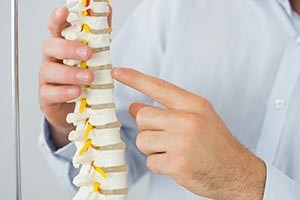Spinal decompression therapy is a popular treatment option for people suffering from various spinal conditions, especially those experiencing chronic back pain. Spinal traction therapy offers a non-surgical treatment option to relieve chronic lower back pain without invasive procedures.
What Is Spinal Decompression Therapy?
It is a treatment to relieve pressure on the spine, often caused by compressed discs or other spinal conditions. There are two primary types of spinal decompression therapy: non-surgical and surgical.
- Non-Surgical – Non-surgical spinal decompression involves using specialized equipment or techniques to gently stretch the spine, relieving pressure on the affected discs and nerves.
- Surgical – Surgical spinal decompression involves removing the source of pressure on the spinal nerves, often through a minimally invasive procedure.
Most Common Non-Surgical Option
Spinal traction therapy is a proven method to alleviate various spine-related conditions. It offers a non-invasive, drug-free therapy for pain relief.
What is Spinal Traction Therapy?
Spinal traction therapy is a technique used by physical therapists, chiropractors, and other healthcare professionals to stretch the spine gently, decompress the spinal discs, and alleviate pain. It works by applying a controlled force to the spine, creating space between the vertebrae and relieving pressure on nerves and spinal discs.
Types Of Spinal Traction Therapy
Your therapist can utilize three main types of spinal traction therapy.
- Manual Traction –A therapist applies force using their hands to stretch the spine gently.
- Mechanical Traction – A specialized device provides a controlled, continuous force to the spine.
- Auto-Traction – To achieve traction, the patient performs controlled movements, such as pelvic tilts or lumbar rolls.
Benefits of Spinal Decompression Therapy
- Relieves Pain – One of the most significant benefits of spinal decompression therapy is its ability to alleviate pain associated with various spinal conditions. Patients often experience immediate pain relief and long-term improvement by relieving pressure on the affected nerves.
- Restores Function – Spinal decompression therapy can help restore normal function to the spine by improving mobility, flexibility, and range of motion.
- Promotes Healing – By reducing pressure on the spinal discs and nerves, spinal decompression therapy promotes healing and reduces inflammation, allowing the body to repair itself more effectively.
- Prevents Further Injury – Spinal decompression therapy can help prevent further injury by stabilizing the spine and strengthening the surrounding muscles and ligaments.
- Improves Posture – Improved spinal alignment and reduced muscle tension often lead to better posture, resulting in less stress on the spine and reduced pain.
Therapy For Different Conditions
Spinal decompression therapy can help a variety of different conditions.
- Herniated Or Bulging Discs – It can help relieve pressure on the affected nerves and promote healing.
- Degenerative Disc Disease – By reducing pressure on the spinal discs, it can slow down the degeneration process and alleviate pain.
- Spinal Stenosis – It can help widen the spinal canal, relieving nerve pressure and reducing pain.
- Sciatica – It can alleviate pressure on the sciatic nerve, reducing pain and improving function.
How To Determine If It’s Right For You
Consult with a healthcare professional experienced in spinal decompression therapy to determine if it’s suitable for your specific condition. They’ll assess your medical history, perform a physical examination, and may request imaging to determine if it is the best therapy for you.
What to Expect During a Spinal Traction Therapy Session
During a spinal traction session, your therapist will assess your condition and determine the most appropriate type of traction for your needs.
- They will determine which technique is best.
- Depending on your specific needs, the session may last between 15 to 30 minutes.
- You may experience mild discomfort during the procedure, but it should feel like a gentle stretching sensation.
- Remember to communicate about your comfort levels throughout the session.
Who Should Avoid Spinal Traction Therapy?
Although spinal traction therapy offers numerous benefits, it may only be suitable for some. Individuals with the following conditions should avoid this treatment.
- Fractures or dislocations in the spine
- Osteoporosis or weakened bones
- Spinal infections or tumors
- Severe spinal instability
- Pregnancy
Post-Treatment Care
Following a spinal traction therapy session, you may be given additional treatments or exercises to maintain improvement. These may include stretching, strengthening exercises, or posture improvement techniques. It’s essential to follow any direction and complete any prescribed exercises to maximize the benefits of spinal traction therapy.
Ensure Safe & Effective Treatment
While yoga, low-impact exercises, pain medications, and injections may be suggested as home remedies for lower back pain, they can sometimes cause more harm than good. Professional decompression treatments are the preferred approach for addressing minor musculoskeletal conditions and injuries. To avoid potential spinal injuries that could exacerbate your condition, relying on a skilled professional for traction therapy is essential.
Schedule A Spinal Decompression Consultation
Interested in exploring spinal decompression? Glacier Chiropractic in Ballard, Seattle, offers non-invasive procedures like spinal traction therapy. Schedule your initial consultation and learn how spinal decompression therapy can alleviate your discomfort and pain.

